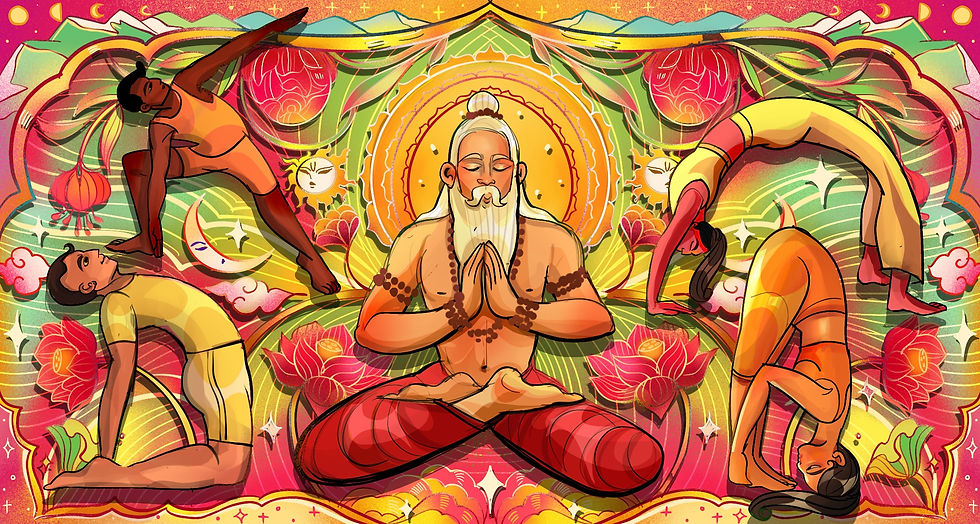Where It All Began: Tracing Yoga’s Origins in Indian Culture
- Divyansh Wadhera
- Jul 6
- 3 min read
Yoga, a practice that has transcended borders and cultures, has its roots deeply embedded in the rich tapestry of Indian culture. To truly appreciate the art of yoga, it’s essential to take a journey back in time and explore its origins.
The Ancient Beginnings
The history of yoga can be traced back over 5,000 years to the Indus Valley Civilization, where evidence of early yoga practices can be found in ancient seals and artifacts. These early practitioners sought a connection between the mind, body, and spirit, laying the groundwork for what would become a profound system of philosophy and practice.
Vedic Texts: The Spiritual Blueprint
Around 1500 BCE, the Vedic texts emerged, introducing the concept of yuj, which means "to unite" or "to join." This idea of union is central to yoga, emphasizing the connection between the individual self and the universal consciousness. The Rigveda, one of the oldest sacred texts, contains hymns that reflect the early spiritual practices that would influence yoga's development.
The Upanishads: A Philosophical Shift
As time progressed, the Upanishads (circa 800-400 BCE) began to delve deeper into the philosophical aspects of yoga. These texts explored meditation, morality, and the quest for enlightenment. The teachings of the Upanishads emphasized the importance of self-realization and the pursuit of truth, shaping the spiritual framework of yoga.
The Birth of Classical Yoga
The classical period of yoga is marked by the Yoga Sutras of Patanjali, written around the 2nd century BCE. This seminal work systematized yoga into an eightfold path known as Ashtanga Yoga, which includes ethical precepts, physical postures, breath control, and meditation. Patanjali's teachings provided a clear framework for practitioners, making yoga accessible to those seeking spiritual growth.
Tantra and Bhakti: Expanding Horizons
During the medieval period, yoga began to diversify with the emergence of Tantra and Bhakti movements. Tantra introduced more physical practices and rituals, while Bhakti focused on devotion and love for a personal deity. These movements enriched the practice of yoga, making it more inclusive and varied.
The Modern Era: Globalization of Yoga
The 19th and 20th centuries marked a significant turning point for yoga as it began to spread beyond India. Influential figures like Swami Vivekananda and T. Krishnamacharya traveled to the West, sharing their knowledge and practices. This period saw the birth of various yoga styles, from Hatha to Ashtanga, catering to the growing interest in yoga as a holistic approach to health and well-being.
Yoga Today: A Global Phenomenon
Today, yoga is a global phenomenon, practiced by millions around the world. It has evolved into various styles and interpretations, yet the essence of its origins remains intact. Whether practiced for physical fitness, mental clarity, or spiritual growth, yoga continues to inspire and transform lives.
Embracing the Journey
Tracing yoga’s origins in Indian culture reveals a rich history of philosophical thought and spiritual exploration. As we roll out our mats and engage in our practice, we connect with a tradition that spans millennia, reminding us of the profound journey of self-discovery and unity. So, the next time you find yourself in downward dog or meditating in silence, remember that you are part of a timeless legacy, a beautiful dance of mind, body, and spirit that began in ancient India. Embrace the journey, and let the spirit of yoga guide you!





Comments